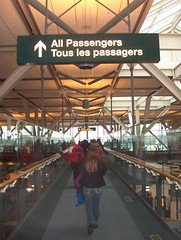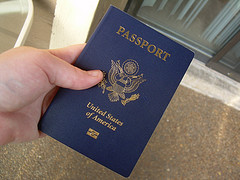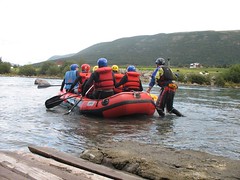 According to the US Citizenship and Immigration Services (USCIS), immigrants can travel abroad while awaiting their green card. Depending on your immigration status, however, you may find it’s not worth the trouble or risk.
According to the US Citizenship and Immigration Services (USCIS), immigrants can travel abroad while awaiting their green card. Depending on your immigration status, however, you may find it’s not worth the trouble or risk.
If you have an application for immigration pending (meaning you haven’t received the green card yet), you may need to carry specific travel documents if you wish to return to the US. You will need to apply for these travel documents before you leave the United States.
Warning: if you have been in the US illegally, then you may not be allowed back into the US if you depart.
No Green Card yet? You’ll need these travel documents
If you haven’t yet received your green card, and you need to leave the US temporarily, it’s imperative that you apply for a permit to re-enter before traveling.
The USCIS issues four types of travel documents:
- Advanced parole
- Refugee travel document
- Re-entry permit
- Carrier documentation
Note, even if you have all of the above documents, there is no guarantee that you will be allowed to re-enter the US.
Risks of Traveling Abroad with Advanced Parole
If you are in the process of adjusting your status to permanent US resident, traveling outside of the US without advance parole can have severe consequences on your immigration status.
If you fail to obtain the proper documents, and you leave the United States without them, you will have effectively abandoned your application for a green card. In addition, you may be not be eligible to be admitted back into the US when you try to return.
What about emergency travel?
If you need to travel outside the US as a result of an emergency, you may request an emergency advance parole appointment at the local field office by contacting USCIS. The following items will be needed at that appointment:
- A completed and signed Form I-131, Application for Travel Document
- The correct I-131 filing fee
- Evidence to support the emergency request (e.g., medical documentation, death certificate)
- Two passport-style photos.
Obtaining Advance Parole without a Green Card
To obtain an Advance Parole, you must complete Form I-131 –Application for Travel Document. The application may be filled out online and special instructions are on the website. Be prepared to pay a the filing fee, but if you meet certain criteria the fee can be waived. On the US Citizenship and Immigration Services website there is all the information you need to apply and obtain your advance parole.
Note that on the USCIS instructions for the I-131, you will see the following information requirements that must be attached to your application:
- A copy of any document issued to you by the USCIS showing your present status in the United States; and
- An explanation or other evidence showing the circumstances that warrant issuance of an Advanced Parole Document; or
- If you are an applicant of status, a copy of a USCIS receipt as evidence that you filed the adjustment application; or
- If you are traveling to Canada to apply for an immigration visa, a copy of the US consular appointment letter; or
- If you are the surviving spouse of a US citizen who died before the second anniversary of your marriage, (or included in your parent’s deferred action grant letter), you must file Form I-131 with a copy of the order notice, or document placing you in deferred action. If you are a qualified child and you are requesting advance parole, you must submit a separate application.
Will you need travel insurance to travel without a green card?
Definitely. Anytime you travel outside your home country, it is highly recommended that you get travel insurance, should anything unforeseen happen while you are out of the country. Accidents happen and medical costs can be covered by the medical travel insurance in a travel insurance policy.
If your travel documentation doesn’t come in time for your trip, and you’ve already purchased airline tickets and put a deposit on your lodging, the cancel for any reason insurance coverage will help cover your losses if you have to cancel the trip.


 All United States citizens, including foreign nationals, traveling by air, land, or sea to Canada must present a passport book, passport card, or other Western Hemisphere Travel Initiative compliant document in order to enter the country or to re-enter the US. This means that one or more of these documents are required by one mode of travel or a combination of travel modes. This became effective June 1, 2009, and applies to those travelers over the age of 16. Children under age 16 may continue to use their U.S. birth or naturalization certificate indicating U.S. citizenship in order to enter Canada through a land or sea border.
All United States citizens, including foreign nationals, traveling by air, land, or sea to Canada must present a passport book, passport card, or other Western Hemisphere Travel Initiative compliant document in order to enter the country or to re-enter the US. This means that one or more of these documents are required by one mode of travel or a combination of travel modes. This became effective June 1, 2009, and applies to those travelers over the age of 16. Children under age 16 may continue to use their U.S. birth or naturalization certificate indicating U.S. citizenship in order to enter Canada through a land or sea border.



